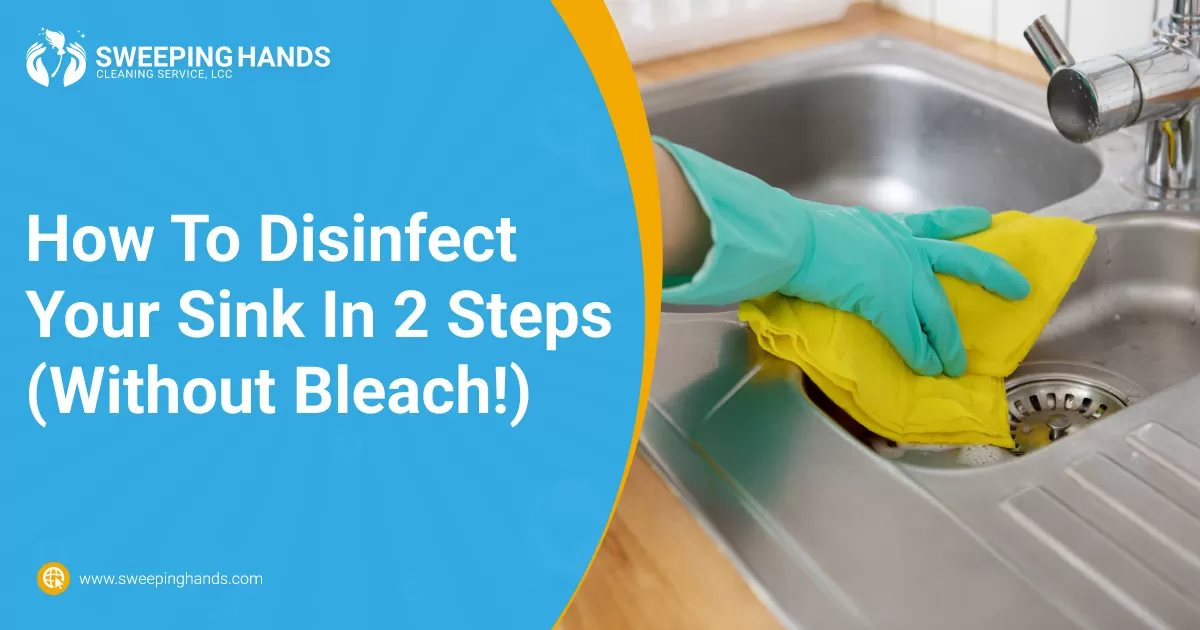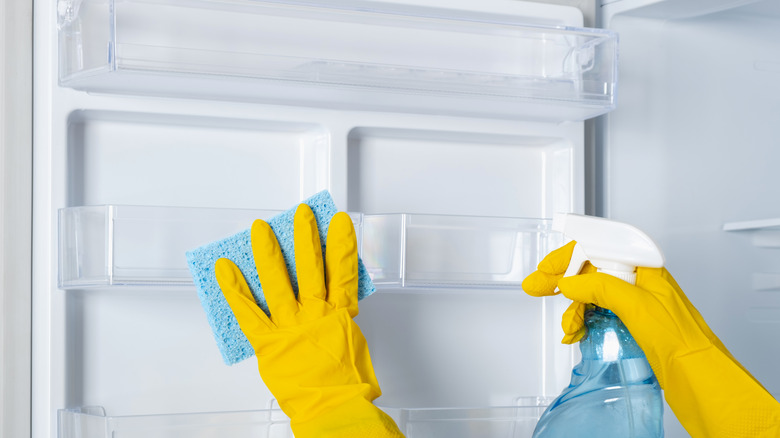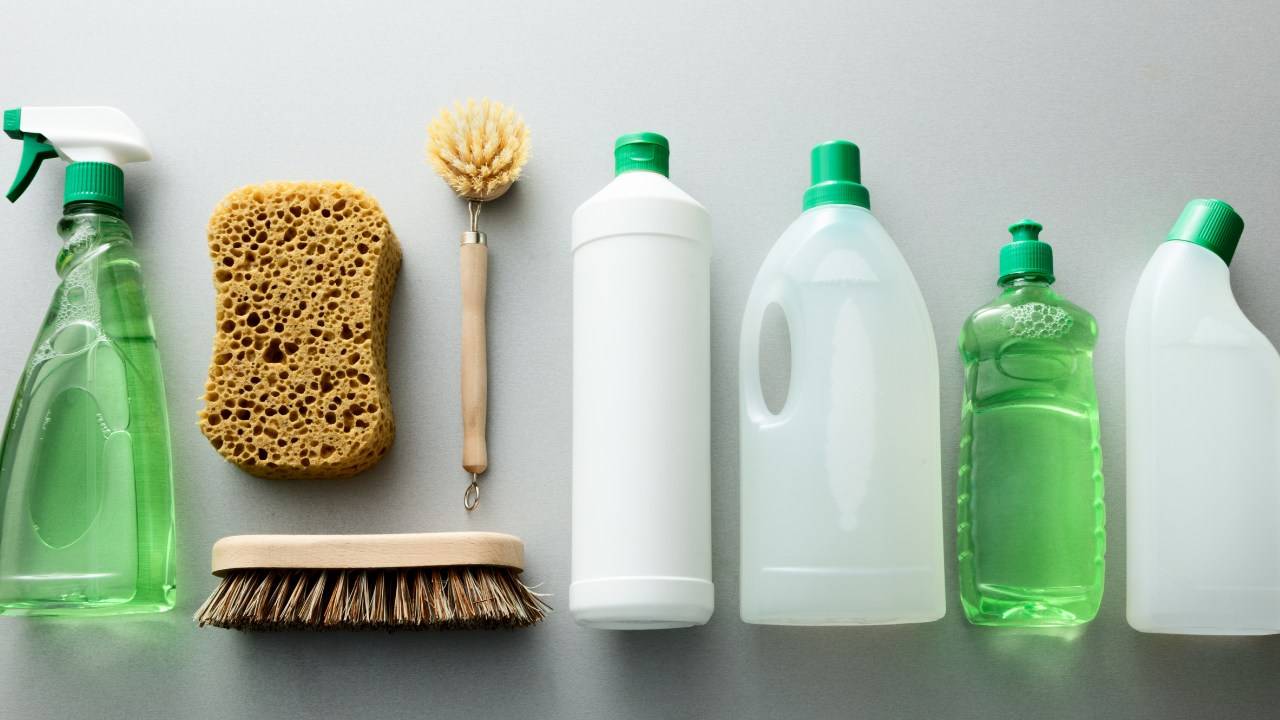Sweeping Hands Cleaning Service LLC

- Address : Gretna, LA 70056, United States

- Opening Hours : 8:00 am - 4:00 pm
How To Disinfect Your Sink In 2 Steps (Without Bleach!)

Cleaning isn’t enough to keep your kitchen germ-free. Disinfecting is essential, and the sink should be the #1 focus in your kitchen. Here’s where dirty dishes are washed, and sometimes even raw food is handled.
All that foodborne bacteria could be lurking in your kitchen sink!
Besides, things can get more complicated when considering that not everyone is comfortable using harsh chemicals like bleach near their food. Luckily, there are alternative ways to keep the sink germ-free.
Here are two DIY, bleach-free methods to disinfect your kitchen sink!
Why disinfecting your sink is important
If you’re not careful enough, you can start a domino effect of infection whenever you handle something full of bacteria—like raw meat or dirty dishes. Germs get carried by water to your sink, and it all can end up on your sponge, cutlery, and even your meals.
These events can cause irritation or something nastier like E. Coli and Salmonella infections. Of course, you can prevent this by disinfecting the sink.
How to disinfect your sink
Taking care of bacteria and viruses takes two easy steps. As long as you clean your kitchen sink daily and disinfect it at least weekly, your kitchen will be safe.
Step #1: Clean your sink
Before disinfecting, it’s essential to remove the food bits and stains on your kitchen sink. You’ll only need water, soap, and a clean sponge. Then, follow these instructions:
- Dampen your sponge just enough to clean the surfaces.
- Wipe your sink with the sponge—if it’s made of stainless steel, follow the direction of the grain. Pick and get rid of the largest bits of food. If you find grime, scrub it with your sponge.
- Rinse the sink and let it dry.
Step #2: Disinfect the sink
As mentioned above, you should disinfect your kitchen sink on top of cleaning it at least once a week. These two DIY methods are easy to follow. Pick the one you prefer!
Method #1: Vinegar and hydrogen peroxide
This method is straightforward and takes just minutes. You only need white vinegar and hydrogen peroxide, which offer dual disinfecting power on your sink.
Follow these steps carefully:
- Pour the peroxide into a dark spray container so the light won’t take away its properties.
- Pour and mix white vinegar and warm water in equal parts in a different container.
- Point and spray the peroxide on the sink and leave it for 5 minutes. Then, rinse the sink and spray the vinegar solution.
- Let the sink dry.
Note: You should use the solutions one after the other; never mix them in the same bottle!
Method #2: Baking soda and vinegar
This method is excellent for disinfecting the surfaces, cleansing the drain, and preventing odors. Also, the scrubbing power of baking soda will help you remove grime on your sink’s surfaces.
You’ll need vinegar, baking soda, and boiling water. Here are the steps:
- Fill a kettle and place it on the stove. While the water boils, scrub the sink with baking soda and water.
- Carefully pour the whole kettle of boiling water down the drain. If you have PVC piping, let the water cool down for a few minutes before pouring it.
- Add a ½ cup baking soda and carefully pour white vinegar until foam comes up.
- Let the mixture drain. Then, rinse the sink with tap water.
Extra: Don’t forget about the rest of your kitchen
Germs also gather on every surface where you handle food. You can use 3% peroxide on wood finishes, including wooden cabinets, cutting boards, and tables.
Vinegar could work too but keep it away from granite and marble. Remember to spot-test before using a new disinfectant on your counters and cabinets.
Let Sweeping Hands keep your home clean and sanitized!
Sweeping Hands care about keeping your home germ-free. You can trust us whenever you need help maintaining your home clean. We use high-quality, EPA-approved products that eliminate up to 99% of germs, bacteria, and viruses.
Recent Post
Categories
Want To Try Our Services?
Ready to experience our services? Your spotless space is just a click away. Call now!



